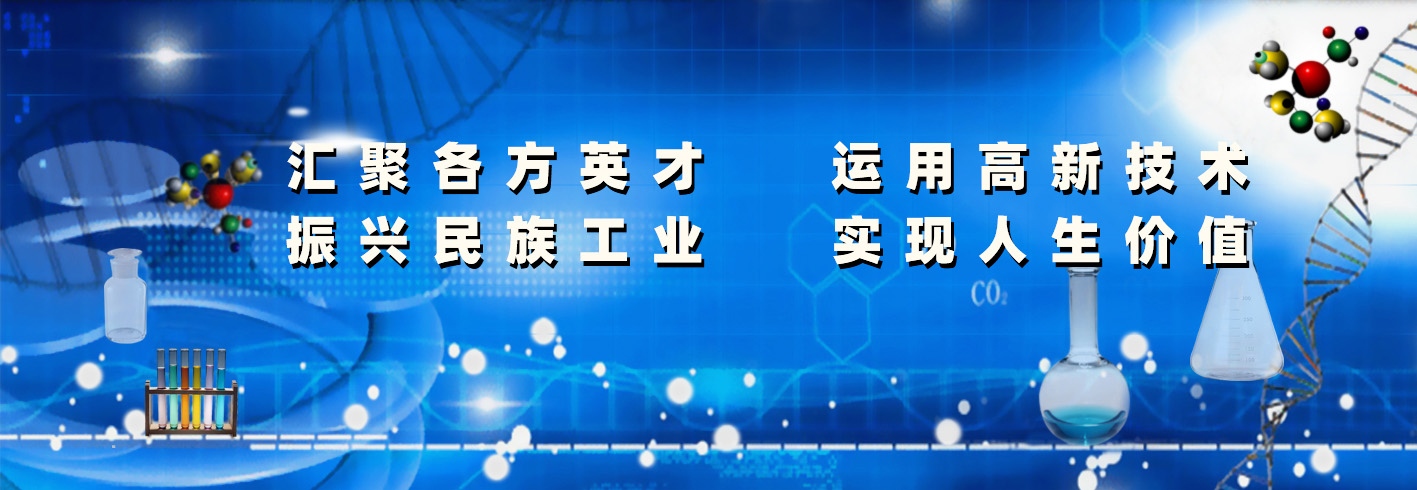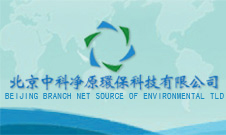
Energy efficient equipment
- Categories:技术银行
- Time of issue:2021-05-07 13:57:41
- Views:0
Process intensification --- Key point is efficient and energy saving
Object --- energy-saving, consumption reduction, environment protection and intensification
Effect --- significantly decrease initial investment and cost and efficient solve "three high" problem
Feature --- Original innovation and integrated innovation is system integration and optimize whole technology
Chemical engineering the fields of priority development --- Process intensification technology
Basic point of process intensification
Always use analytical means like NMR, HPLC, GC for process diagnostic. Avoid useless work.
Carefully assess the bring pressure process and effect of combination of reaction and separation improve mass transfer and heat transfer for maximum energy saving.Implementation of strengthen the process increase the possibility of material full utilization and cascaded utilization of energy.
Systematical review is vital --- the factors affecting productivity include heat transfer mode, the size of heat exchanger, material in pipe, mismatch of energy, the lack of measurement and failing to notice the difference flow velocity and flux in normal pressures, decompression and compression conditions.
Pay attention to system-wide optimization, find out every section time, capacity and energy consumption situation. Use system engineering technology to optimize the whole system.
Rational uutilize of energy and resource at macro level and make rational urban industry distribution. Focus on breaking through bottleneck technique
Current main tendency of industrial energy saving
1. Chemical engineering is pillar industries in national economy which occupy about 30% of the value of industrial output. Steel, chemical engineering, pétrification and building materials as high energy consumption industries, they are seriously excess capacity and high energy and material consumption and high pollution. These industries’ scientific foundation is chemistry, and technical foundation is chemical engineering. Chemistry & Chemical Industry is core of industrial production.
2. Current national economic development focus on energy conservation transformation and product structure adjustment instead of building other plants.
3. They key point of industrial energy saving is waste heat recovery, efficient-saving technology and equipment development which is the universal major program.
1. Using advanced technology means to improve current industrial technology
Pay attention to enthalpy’s (energy) analysis, exergy’s (available energy) analysis, analysis of energy and flow in system and process simulation. Using these advanced methods to do industrial elementary analysis and find out high energy consumption steps and unreasonable steps of and energy utilization to modify research plan and make progress in technology.
2. Using efficient conversion technology to improve resource utilization
Industrial production process is conversion process between energy and substance. This process need continuous R&D and evaluate conversion process of physics, chemistry and biology or other technologies and equipment to improve conversion rate .
3. Integrate innovation, process, engineering, equipment and organic synthesis with control and system optimization
Change the trend of putting emphasis on production development and discounting energy saving. Pay attention to process research rather than engineering and equipment research.
Industrial technology is system engineering including process, engineering, equipment, control and so on. Only by organizing all effort to technical improve by combining control with process, engineering and equipment can solve the industrial technology problem.
4. Technology improvement focus on breaking up limitations of industry and specialty and implement multidisciplinary collaboration strategy
Steel, metallurgy, coking, construction materials, cement, thermal power, boiler, chemical engineering and oil refining have its own limitations.
experts in each field have Industry limitations so that they may not solve vital technical problems independently and lack of knowledge of new technology in related field. Only by breaking up limitations of industry and specialty and implement innovation collaboration strategy can solve the industrial problem.
5. Saving resource is saving energy and emphasize resource development
Energy and resource are integration. Saving resource is saving energy. The production pattern that paying attention to single product acquisition and processing rather than full development should be changed. Promoting resource full development and value-added utilization are necessary.
Momentum transport, energy transport, quality transport and reaction engineering and process intensification
Common requirement of mass transfer, heat transfer and reaction --- abundant contact area
1. direct contact of micro-molecular --- maximum contact and homogeneous phase are favorable. Key elements’ interactions between each other and optimum solvent.
2. Invent mesoscopic physics --- Using huge specific surface area of nanometer and micrometer (catalysis, phase transition, enhancement of Distribution and dispersion for gas, liquid and solid and synthetic action of supplementary means like ultrasonic, circulation disturbance and distributor.
3. Heat transfer efficiency from mixed system or supply directly is much higher than Macro mechanical surface indirect heat exchange.
Utilizing direct steam heating or heat-removing by all means is preferred embodiment.
Suboptimal plan is using heat exchanger. Pipeline reaction heat exchanger, fluidized bed, spray bed, slurry reactor and spin bed are ideal heat transfer and mass transfer equipment with high efficient which worth developing.
Key point of mass transfer --- mix complexity between the moleculars
It depends on distance between two molecules and entropy as impetus increase
Gas---Distance between two molecules are maximal and could have free movement relatively
It is easy to achieve rapid mixing with good performance by concentration gradient and molecular diffusion movement. It could form well-mixed gas phase.
Liquid---molecular interact with each other and there is molecular attraction between the molecules. Mixing need depend on system’s new force between molecules or external force to break through attraction between the molecules to
Partially dissolve or disperse ( total mixed---fully mixed homogeneous phase; partially mixed---exist mutual independence and incomplete miscible heterogeneous phase. Perfect system--- micelle and vesicle)
Solid--- Chemical bond or greater force exist between molecules. Only by fusing to get fused solution or solid solution to disperse. Or high solvent cooperation function and violent impact work could effectively disperse.
Ideal system ---suspension system of nano-particle
Mass transfer---mix and transport process between substances
Principal element is intermiscibility which is breaking through intermolecular forces.
1) Homogeneous phase is the most easily. Heterogeneous phase has low mass transfer efficiency. Solid-solid system is the poorest.
2) Appropriate mixing methods are important.
3) Solvent or phase-transfer catalyst may be in the options.
4) Mixing difficulty level of various system( 1 the easiest, 7 the most difficult): 1. Gas-gas (homogeneous phase) ; 2. Liquid-liquid (homogeneous phase); 3. Liquid-liquid ( heterogeneous phase); 4. Gas-liquid ( heterogeneous phase); 5. Gas-solid ( heterogeneous phase); 6. Gas-liquid-solid ( heterogeneous phase); 7. Solid-solid (( heterogeneous phase).
By-production increasing and conversion decrease may be caused by heterogeneous dispersion.
Adding ultrasound in reaction kettle has effect on solid-liquid reaction. Ultrasonic technology has potential application prospect in extraction and separation.
Energy used in process intensification
Mixing entropy in system, diffusion force caused by concentration gradient , chemical reaction force between the components, energy of release or absorb gasify solvent or gives off heat leading to increase temperature, violent mixing in system or kinetic energy of material directional move, Van der Waals force, hydrogen bond and so on as solvent cooperation function.
Raw material or product’s gas,liquid, solid as different material state, the inherent density difference cause directional logistics movement---gas impetus, lift force, solid gravity and material transportation process bringing power are process intensification power that could be used.
Rational equipment innovation could convert related power as much as possible to internal impetus that could considerably enhance mass and heat process. This may change the situation of inefficient equipment and high energy consumption.
Mass transfer
Intermiscibility: mass transfer efficiency is highest in homogeneous phase, in heterogeneous phase comes second, in solid and liquid is lowest. For instance,
Friedel-Crafts reaction, find appropriate solvent or catalyst for miscible. If conversion or selectivity have anomaly regularity, it may have problem in mass transfer.
Stir: take baffle or coil (enhance heat transfer) or double stir into consideration.
Heterogeneous dispersion: increasing by product, decreasing conversion rate.
Adding ultrasound in reaction kettle. Ultrasonic technology has potential application prospect in extraction and separation
Interfacial agent: in most case, adding surfactant into heterogeneous reaction system(g-l、g-s、g-l-s、l-s) could change mixing state of material, which is used in organic chemical reaction with cation and anion participating. For example, quaternary ammoniumsalt surfactant as positive ion could used in in organic chemical reaction with negative ion participating. For smaller negative ion like OH-, it should add larger alkyl quaternary ammoniumsalt. For larger negative ion like omethoate’s Sulfur ammonium phosphate salt, sodium phenolate, it should add smaller alkyl quaternary ammoniumsalt. For redox reaction or halogenation in acid system, adding surfactant may be efficient.
Heat transfer process and equipment
Heat transfer process is a providing and removing heat process.
Vapour especially water vapour has highest heat transfer efficiency.
Water has the best heat transfer effect in liquid for highest specific heat.
Three phased has the highest masstransfer efficiency among full contact of g-l, g-s, l-l, g-l-s.
The best process intensification method is rational combination of reaction-separation.
Heat transfer through heat exchanger is second choice.
Waste-heat utilization and heat pump technology
(1)Recycle of low temperature exhaust heat
(2)Recycle of medium temperature exhaust heat
(3)Recycle of high temperature exhaust heat
(4)Recycle of cold energy
(5)Heat pump distillation energy conservation
(6)Heat pump evaporation and sea water desalination
(7)Air preheating of industrial heating furnace energy saving
(8)Application of shape-stabilized phase change and thermal energy storage material
(9)Flue gas waste heat recovery in industrial heating furnace
(10) Recycle of pressure energy
Significance of waste-heat utilization
petrochemical enterprise is major client both in energy production and energy consumption which occupy 25% in total industrial energy consumption.
Low-grade heat energy below 130℃ in oil refining process account for 60% of
total energy consumption in oil refinery.
Thermal energy is going away with circulating cooling water currently. And then it is lost into space through cooling tower, which lead to water wastage.
Surplus heat utilization has potential in industry. For instance, recyclelow-grade heat using energyheat pump technology to achieve energy-saving and water saving.
The key of surplus heat utilization is how and where to recycle and utilize these surplus heat energy.
If the waste-heat of industry production is used in the heating. It could replace heating boiler to achieve energy saving effect.
Recycle of low temperature exhaust heat
1. low temperature exhaust heat is mainly excess heat below 150℃
2. It come from emission of exhaust, condensation and cooling of material in petrochemical industry and light industry.
3. Recycling should focus on heat recovery of rather concentrated flue gas and condenser between 80 and 150℃.
4. Recycling should combine urban heat supply and heating. It is the easiest to implement and the most reasonable application. For example, hot-blast stove exhaust in the steel plant to heat backwater to 90℃ to urban heating.
5. In certain conditions, Using heat pump technology to rise current status will reduce cost than geotherm and heat pump heat supply.
Recycle of medium temperature exhaust heat
1. Medium temperature exhaust heat is mainly medium temperature gas between 200℃ and 500℃.
2. Recycling of medium temperature exhaust heat should process gas with dry dust removal method to remove dust and suspended solids.
3. Apply waste heat boiler to recycle wast heat and high pressure steam generated by waste heat boiler is used to generate electricity in expander.
4. It's best to use organic working medium in order to improve efficiency of waste heat power generation.
5. Medium heat could be used as heating medium to replace hot oil furnaces and medium pressure steam for energy saving.
Recycle of high temperature exhaust heat
1. High temperature exhaust heat is mainly high temperature gas above 500℃, for instance burning gas of heating furnace.
2. The efficient way of recycling of high temperature exhaust heat is using high temperature thermal storage technology to preheated air for combustion.
3. Modify, develop and improve the technique of high temperature thermal storage. Use shape-stabilized phase-change and thermal storage materials to get heat accumulator with high thermal storage ability, high heat transfer rate and high porosity.
4. Purified high-temperature gas is used to gas power generation.
Recycle of cold energy
1. Cold energy is mainly gas and liquid that temperature lower than room temperature and cold energy generated from gas expansion caused by pressure decrease.
2. The most convenient way of application is using as cold medium in air conditioner
3. Low temperature gas or liquid could generate high pressure by heating and it could be used to generate electricity by recycling energy through expander.
liquefied natural gaswith -165℃ has a large amount of cold energy to recycle, which is meaningful.
Beijing Insight Ecological Technology Co., Ltd.
Address: East Road, Haidian District, Beijing Anningzhuang 18 Tell:010-62944395 Mail:insight@insight.net.cn
《People's Republic of China telecommunications and information services business license》Numbering:京ICP备19053360号-1 Powered by www.300.cn



